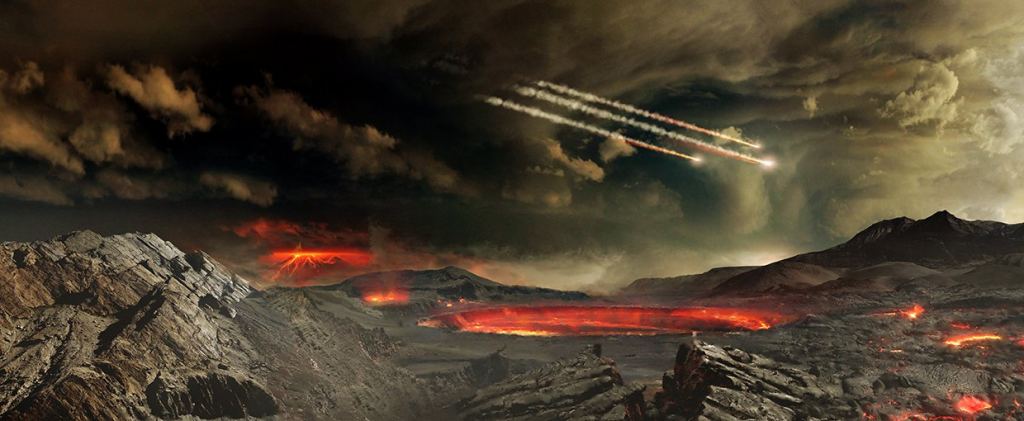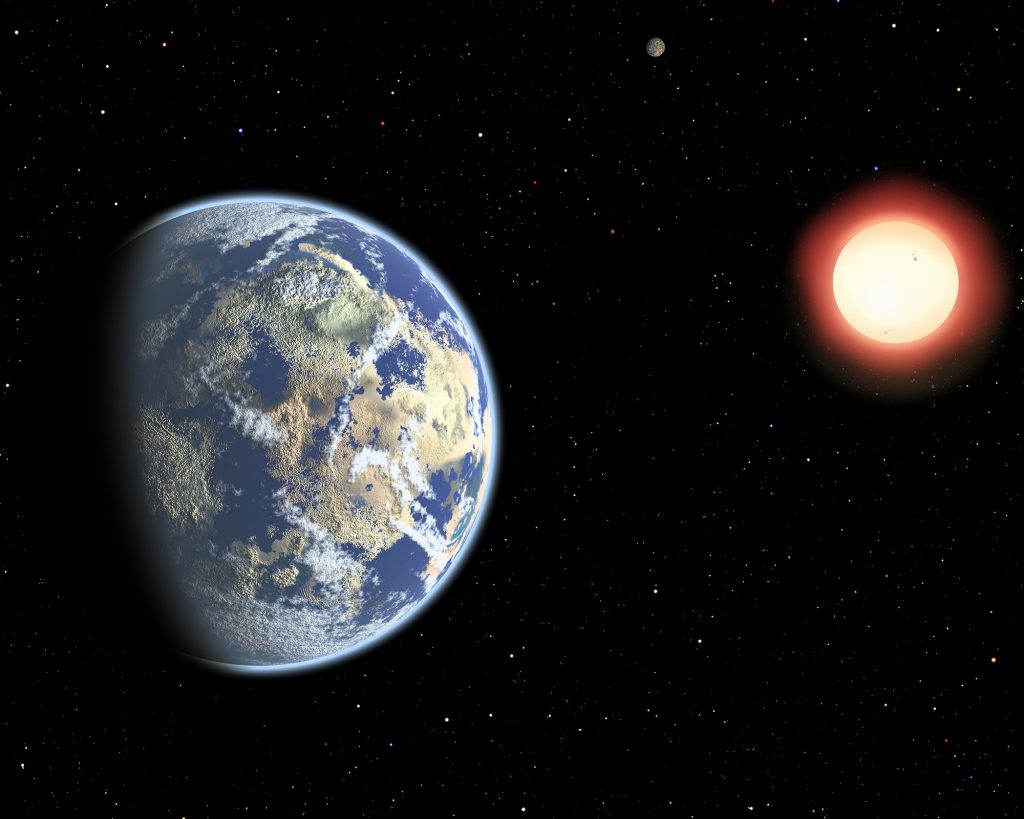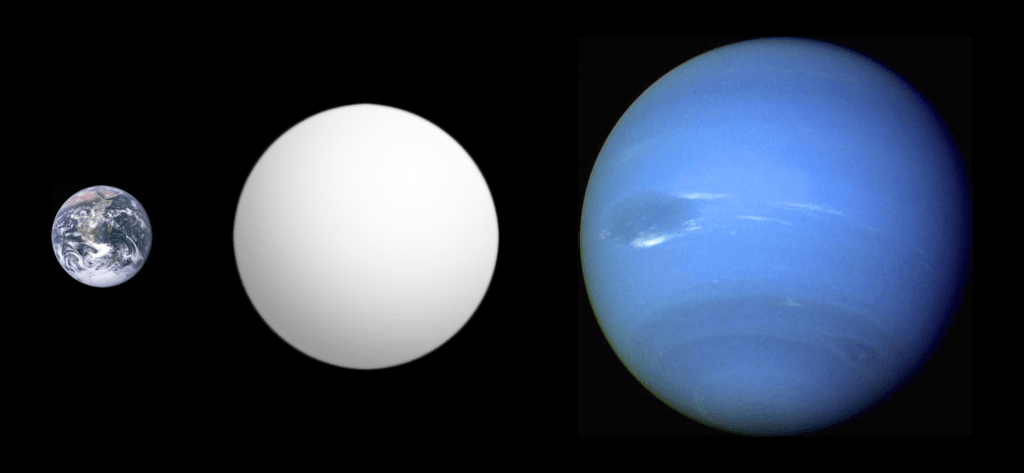Evidence from an ancient section of the Earth’s crust suggest that Earth was once a water-world, some three billion years ago. If true, it’ll mean scientists need to reconsider some thinking around exoplanets and habitability. They’ll also need to reconsider their understanding of how life began on our planet.
A new paper presents these results in the journal Nature Geoscience. The title of the paper is “Limited Archaean continental emergence reflected in an early Archaean 18O-enriched ocean.” The co-authors are Boswell Wing of the University of Colorado, Boulder, and his former post-doc student, Benjamin Johnson at Iowa State University.
The work is focused on an area in the Australian Outback called the Panorama district. In that region in northwestern Australia there’s a slab of ocean floor 3.2 billion years old, that’s been turned on its side. The chunk of crust holds chemical clues about ancient Earth’s seawater.
“There are no samples of really ancient ocean water lying around, but we do have rocks that interacted with that seawater and remembered that interaction,” Johnson said in a press release.
“The origin and evolution of Earth’s biosphere were shaped by the physical and chemical histories of the oceans.”
From the paper “Limited Archaean continental emergence reflected in an early Archaean 18O-enriched ocean.
The authors wanted to re-boot the debate over what ancient Earth looked like, and to break new ground in the discussion.
In the introduction to their paper, the two authors say “The origin and evolution of Earth’s biosphere were shaped by the physical and chemical histories of the oceans. Marine chemical sediments and altered oceanic crust preserve a geochemical record of these histories. Marine chemical sediments, for example, exhibit an increase in their 18O/16O ratio through time.”
Marine sediments have been well-studied over time, but the authors of this study looked at the ancient crust instead. The ancient oceans held different types of oxygen that were then deposited into the crust. The scientists gathered over 100 samples of the ancient rock and analyzed it for two oxygen isotopes: oxygen-16 and oxygen 18. They wanted to find the relative amount of each isotope in the ancient crust, to compare it to the amounts in the sediment.

Their results showed more oxygen-18 in the crust when it was formed 3.2 billion years ago, meaning the ocean at that time had more oxygen-18. The pair of researchers say that means that when that crust formed, there were no continents. This is because when continents form, they contain clays, and those clays would have absorbed the heavier oxygen-18. So if there had been continents 3.2 billion years ago, their crust samples would have held less oxygen-18.
The over-arching conclusion of their work is that the Earth’s oceans went through two distinct states: one prior to continents forming, and one after continents formed.
Marine chemical sediments have been studied extensively to try to piece together continent formation on ancient Earth. As the study says, those ancient sediments include “carbonates, phosphates, microcrystalline silica and iron oxides. As these minerals form directly from aqueous species, they can reflect the ?18O of the water with which they coexist.” The sediments are like an archival record of Earth at the time, and the older sediments show oxygen-18 values increasing steadily through time, all the way up to today. But this work contrasts with that, and the authors suggest that seawater oxygen-18 decreased through time.

The pair of scientists constructed a model for ancient Earth, showing that “the initiation of continental weathering in the late Archaean, between 3 and 2.5 billion years ago, would have drawn down an 18O-enriched early Archaean ocean to ?18O values similar to those of modern seawater.” So only after continents formed, could the oxygen-18 values begin to look like modern values.
Although this study points to the possibility of ancient Earth as a water-world, it doesn’t mean that the planet was without any land-forms. Island-size areas of land, or even micro-continents, may have existed at the time, volcanic in nature, and very rocky. But the types of vast land-forms that cover the Earth today, rich in soil and with tall mountain ranges, may not have existed. If they had, the oxygen-18 content would have more closely resembled today’s.
“There’s nothing in what we’ve done that says you can’t have teeny, micro-continents sticking out of the oceans,” Wing said in a press release. “We just don’t think that there were global-scale formation of continental soils like we have today.”
The authors aren’t suggesting that their work is the definitive piece of evidence in the ongoing discussion around early Earth. They note that their are other possible reasons for their results.
If the ancient continents formed much more slowly than modern continents, that could explain the the discrepancy in oxygen-18. It’s also possible that the clays that absorb oxygen-18 formed in the ocean itself, rather than on the continents.
That points to an enduring mystery in Earth science: when exactly did continents form?

It’s likely, according to some evidence, that the continents could only form as the Earth’s core shed heat and cooled down. In any case, modern continents didn’t take shape until after the Jurassic. Prior to that, the single super-continent of Gondwana covered about one-fifth of the Earth’s surface. Wing wants to examine younger areas of the Earth’s crust to try to determine more clearly when the modern continents formed.
This study also touches on early life on Earth, and how and when it formed. Earth’s early oceans, much like modern oceans, acted as a buffer, which “mediated climatic feedbacks between the biosphere, atmosphere and geosphere through deep time, helping to ensure long-term planetary habitability.”

Science has painted a picture of what the early Earth may have looked like, and what the nature of the oceans was. But it’s far from complete. The evidence is all buried, in rock and in time. And as we seek to understand climate change here on Earth, and as we get better and better looks at exoplanets, all these questions about ancient Earth, the oceans, and the biosphere, take on new importance.
As the authors say in their paper, “An early Earth without emergent continents may have resembled a ‘water world’, providing an important environmental constraint on the origin and evolution of life on Earth as well as its possible existence elsewhere.“
“The history of life on Earth tracks available niches,” said Wing. “If you’ve got a waterworld, a world covered by ocean, then dry niches are just not going to be available.”
More:
- Research Paper: Limited Archaean continental emergence reflected in an early Archaean 18O-enriched ocean
- Press Release: Early Earth may have been a ‘waterworld’
- Wikipedia: Ocean Planet


“It’s likely, according to some evidence, that the continents could only form as the Earth’s core shed heat and cooled down.”
Their preferred model gives a very neat result of 3-5 % the current continental surface as subaerial (i.e. exposed to atmosphere), or ~ 0.7*4 = 2.8 % of the total surface area as continent at 3.2 Ga. This is a fair fit to older results that has the same general model resulting in “only 2–3% of the Earth’s area consisted of emerged continental crust by around 2.5 Ga” combined with a very rapid subaerial increase hereafter [ https://www.sciencedirect.com/science/article/abs/pii/S0012821X08005748 ].
The older paper has the continental crust mostly under magma and/or ocean due to it being thinner with the then hotter mantle. The quick subaerial rise is suggested to explain the quick change from CO2 to O2 dominated atmosphere due to several changes in erosion gas sinks.
“They’ll also need to reconsider their understanding of how life began on our planet.”
That takes on a new urgency, since recent results show that the biological evidence – genome trees [see link below], heat shock protein ancestor temperature ranges and cell metal content – that life evolved in deep ocean alkaline hydrothermal vents was not a fluke. Their mineral assemblies can produce 1C-3C hydrocarbons that build cells out of CO2 and H2, which was also the universal common ancestor metabolism. That even got “surface pool” Benner to bend a bit [ [ https://www.sciencemag.org/news/2020/03/was-life-s-first-meal?utm_campaign=news_daily_2020-03-02&et_rid=388985880&et_cid=3228349 ].
Not mentioned there is that obstacles to evolution in alkaline hydrothermal vents have been shelved through the years, too many to quickly reference so I just pull results from memory (with the usual caveats). These vents concentrate biomolecules; in the early ocean the 3C hydrocarbons would meet Fe2+ at the ocean interface and in sum the vents could produce lipids, sugars, and nucleobases in its various parts; they can replicate 100s of bases long RNA strands by abiotic thermocycling PCR; the Fe rich ocean would sequester phosphate but the filtered vents would likely not and it could also produce ammonia; another recent result is that the environment maximizes membrane vesicle production out of heterogeneous lipid mixes*.
The only thing they would not produce was amino acids, but in subduction zones nearby acidic vents would happily do so by Miller synthesis.
*) I would not think it was an obstacle as much as lowering likelihood for early life if it had to rely on mineral pores. Pores have the wrong flow topology in vents in that they have through flow instead of flow between an inside and outside. Modern cells has no evolutionary remains of ever having been able to orient pore proteins for through flow. So if vesicle formation hadn’t been easy, it had been the rare pore that would have the right conditions of restrictions et cetera for evolving cell function further.
Any ammonia would go into the production of nucleobases. Ultimately the nitrogen source at the time was the atmosphere, but before enzymes evolved ammonia was the intermediate.
I should perhaps also add that the gluconeogenesis/glycolysis could happen at the vent(ocean interface [Heller synthesis], while lipid production could happen at the vent/crust interface (Fischer-Tropsch synthesis, say, or further synthesis out of recycled 3C ).
A bit of a curious paper, as the same conclusion was reached a couple of years ago: in the Hadean and most of the Archaean there was at most 10% land (Bindeman et al, Nature, volume 557, pages
545–548(2018)). In 2010 Minik Rosing suggested the same, this time as a solution to the faint Sun paradox. A dark ocean world would absorb more energy from the dimmer Sun and not freeze over. Interesting how things come around, again…